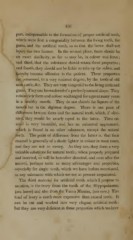Page 440 - My FlipBook
P. 440
; ;;
43G
part, indispensable to the formation of proper artificial teeth,
which were first a congeniality between the living teeth, the
gums, and the artificial teeth, so as that the latter shall not
injure the two former. In the second place, there should be
an exact similarity, as far as may be, in colour and form
and third, that the substance should retain these properties
and fourth, they should not be liable to take up the saliva, and
thereby become offensive to the patient. These properties
are possessed, to a very eminent degree, by the teeth of old
neat cattle, &c. They are very congenial to the living teeth and
gums. They can be rendered of a perfectly natural shape. They
retain their form and colour unchanged for a great many years
in a healthy mouth. They do not absorb the liquors of the
mouth but in the slightest degree. There is one point of
difference btween them and the natural teeth, which, if obvi-
ated, they would be nearly equal to the latter. Their en-
amel is very beautiful, and lias an animated appearance,
which is found in no other substance, except the natural
teeth. The point of difference from the latter is, that their
enamel is generally of a shade lighter in colour in most cases,
and they are not so strong. As they are, they form a very
valuable substitute for natural teeth when properly prepared
;
and inserted, as will be hereafter directed, and next after the
natural, perhaps unite as many advantages and properties,
especially for single teeth, which we have before mentioned,
as any substance with which we are at present acquainted.
The third material for artificial teeth which I propose to
mention, is the ivory from the tooth of the Hippopotamus,
(sea horse) and also from the Vacca Manina, (sea cow.) This
kind of ivory is much more expensive than animal teeth. It
can be cut and worked into very elegant artificial teeth
but they are very deficient in those properties which we have
43G
part, indispensable to the formation of proper artificial teeth,
which were first a congeniality between the living teeth, the
gums, and the artificial teeth, so as that the latter shall not
injure the two former. In the second place, there should be
an exact similarity, as far as may be, in colour and form
and third, that the substance should retain these properties
and fourth, they should not be liable to take up the saliva, and
thereby become offensive to the patient. These properties
are possessed, to a very eminent degree, by the teeth of old
neat cattle, &c. They are very congenial to the living teeth and
gums. They can be rendered of a perfectly natural shape. They
retain their form and colour unchanged for a great many years
in a healthy mouth. They do not absorb the liquors of the
mouth but in the slightest degree. There is one point of
difference btween them and the natural teeth, which, if obvi-
ated, they would be nearly equal to the latter. Their en-
amel is very beautiful, and lias an animated appearance,
which is found in no other substance, except the natural
teeth. The point of difference from the latter is, that their
enamel is generally of a shade lighter in colour in most cases,
and they are not so strong. As they are, they form a very
valuable substitute for natural teeth when properly prepared
;
and inserted, as will be hereafter directed, and next after the
natural, perhaps unite as many advantages and properties,
especially for single teeth, which we have before mentioned,
as any substance with which we are at present acquainted.
The third material for artificial teeth which I propose to
mention, is the ivory from the tooth of the Hippopotamus,
(sea horse) and also from the Vacca Manina, (sea cow.) This
kind of ivory is much more expensive than animal teeth. It
can be cut and worked into very elegant artificial teeth
but they are very deficient in those properties which we have


